How Russia and the United States have established the boundaries of the Russian possessions in Alaska
In 1824, the United States of America was a young, but already active and ambitious state with its own claims to a certain role in world politics and economics. The Russian Empire, which defeated Napoleon Bonaparte, was at that time a much more powerful state. However, at the end of the 18th century, Russia and the United States began to ascertain the ownership of the northwestern part of America, which until that time was in the sphere of interests of the Russian Empire.
The exploration by Russian travelers and pioneers of land in the far northwest of the Americas was a completely natural continuation of the development of Eastern Siberia and the Far East. The first in the north-west of America appeared sailors Seeds Dezhnev. It was 1648 year. Shipwrecked seamen managed to land on the shore, where they created the first settlement of Kangovei, which, however, did not last long.
After nearly a hundred years, in 1732, Mikhail Gvozdev on the boat "Saint Gabriel" was the first European navigator to reach the coast of Alaska near Cape Gvozdyev (Cape of Wales). In 1741, the Vitus Bering expedition explored the Aleutian Islands and Alaska, and 1 in August 1759 explored fur trader Stepan Glotov with his people on the shore of Unalashka Island in the Aleutian Archipelago. But the presence of the Russian merchants did not really like the Aleuts inhabiting the islands. In 1763, the Aleut Uprising of the Fox Ridge erupted here. Local aborigines destroyed the 4 merchant ship, killed the Russian industrialist 162 and their assistant. In 1764, the commander of the ship “Saints Peter and Pavel”, who arrived on the Aleutian Islands, found traces of the destruction of the Russian station, after which in June 1765 took a punitive raid.
In 1772, Ivan Solovyov established a permanent Russian settlement on Unalaska. When the Russian-American company was founded in 1796, Unalashka became its main base. From that time on, the Aleutian Islands were in fact a territory under the control of Russia, and the majority of the population of Unalaska was already Russian. Orthodox priests were active in converting the Aleuts to Christianity.
In parallel with the colonization of Unalashka, the development of Kodiak Island in the Bay of the Three Saints began. Here in August 1784 of the expedition arrived Grigori Shelikhov, consisting of three Galiots “Three Saints”, “Saint Simeon” and “Saint Michael”. Kodiak Island was inhabited by the Eskimos, whom Russian pioneers also began to baptize, while at the same time teaching them agricultural skills, such as the cultivation of turnips and beets. So on the island Kodiak settlement Pavlovskaya harbor.
The growing number of the Russian population of the Aleutian Islands and the baptism of the Aleuts and Eskimos led to the fact that in 1783, Empress Catherine II gave the go-ahead to the creation of an American Orthodox diocese. Archimandrite of the Valaam Monastery Joasap became the bishop of Kodiak, who arrived on the island in 1793 at the head of the Orthodox mission of five monks.
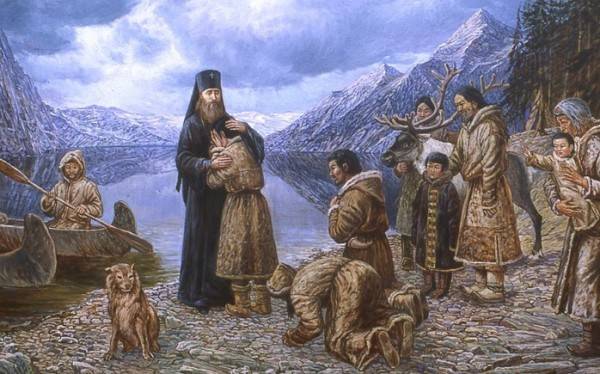
Russian monks immediately built a church with the help of industrialists, launched an active missionary work among the local population. In 1791, the Nikolaev Redoubt was founded in the Gulf of Cook; in 1792, a settlement at Lake Iliamna. Then the Russian industrialists outfitted an expedition to the Yukon River.
In 1799, the Mikhailovsky Fortress was founded, later known as Novo-Arkhangelsk. This village became the center of the Russian colonization of the Americas. In 1819, 200 Russians lived in Novo-Arkhangelsk and about 1000 local Eskimos and Aleuts.
An elementary school was established in the village, a church was built, a shipyard and various workshops opened. The company was engaged in hunting, including the extraction of fur ryan. As a labor force, local residents were usually used, which they began to be attracted to fisheries.
In 1808, Novo-Arkhangelsk received the status of the capital of Russian America, whose management was concentrated in the hands of a Russian-American company with headquarters in Irkutsk. Administratively, the Russian possessions in Alaska were subordinate to the Siberian Governor-General, and from 1822 onwards - to the East-Siberian Governor-General.
It should be noted that not only the Aleutian Islands and Alaska attracted Russian pioneers. 11 September 1812, the year Ivan Kuskov founded the fortress of Ross. It was located just 80 km north of the modern city of San Francisco — in California. At the beginning of the 19th century, these territories seemed to belong to the jurisdiction of the Spanish crown, but Kuskov acquired land for a Russian settlement from local Indian tribes.
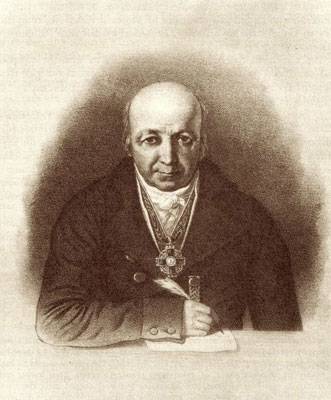 The decision to create a Russian trading post in California was taken by Alexander Andreyevich Baranov himself (pictured) - The main ruler of Russian settlements in North America in 1790-1818. Coming from a merchant family, Alexander Andreevich Baranov, in 1790, headed the Northeast company created by Grigory Ivanovich Shelikhov, which was later transformed into a Russian-American company. Despite the merchant origin, in honor of recognizing merit, Alexander Baranov in 1802 received the rank of collegiate adviser, corresponding to an army colonel and giving the right to hereditary nobility. It was under the leadership of Baranov that the Russian colonization of Alaska and California was carried out at the beginning of the 19th century.
The decision to create a Russian trading post in California was taken by Alexander Andreyevich Baranov himself (pictured) - The main ruler of Russian settlements in North America in 1790-1818. Coming from a merchant family, Alexander Andreevich Baranov, in 1790, headed the Northeast company created by Grigory Ivanovich Shelikhov, which was later transformed into a Russian-American company. Despite the merchant origin, in honor of recognizing merit, Alexander Baranov in 1802 received the rank of collegiate adviser, corresponding to an army colonel and giving the right to hereditary nobility. It was under the leadership of Baranov that the Russian colonization of Alaska and California was carried out at the beginning of the 19th century.Ivan Aleksandrovich Kuskov (on the photo), a tradesman from Totma, served under the direction of Baranov in the Russian-American Company. In 1796 and 1800 Aln was the ruler of Kodiak, in 1806-1808. - in Novo-Arkhangelsk, in 1802-1803 was the head of the Russian settlement Yakutat. It was he who founded Fort Ross, and became his first commandant. In this position, Kuskov spent a long ten years. In 1821, 56-year-old Kuskov retired due to his age and returned to his native Totma.
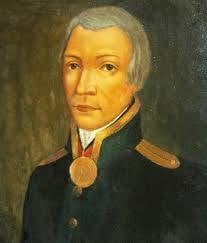
Fort Ross was the most southerly Russian settlement in North America and was created to supply Russian settlements in Alaska with food. Therefore, from the very beginning of the fort's existence, Russian settlers tried to develop agriculture. By the way, the Russian colony, which existed for thirty years, led the economy rather successfully. Shipbuilding yards, mills, vineyards and orchards were created here. The settlers grew apples, peaches, pears, quinces, cherries, and raised livestock.
The population of Fort Ross in 1825 was 50 employees of the Russian-American company, plus local Indians and Aleuts brought from Alaska. In 1836, 260 people lived here. As in Alaska, the Russians carried out missionary activities, trying to baptize local Indians to Orthodoxy. Mixed marriages also appeared, since all employees of the Russian-American Company were men.
At the beginning of the XIX century, American companies became interested in the territory of Alaska. Not wanting to go into direct conflict with Russia, the Americans armed the local Indians and urged them to attack Russian settlements. Therefore, the Russian-American company was forced to initiate negotiations with the United States. Finally, 4 September 1821, Emperor Alexander I announced the expansion of Russian possessions in America to the 51 parallel and banned the trade of foreign companies with Russian settlers and Indians living in the territory controlled by the Russian Empire.
Naturally, the decree of the Russian emperor caused discontent in the United States, which themselves claimed the territory of Alaska, and in England, who feared any strengthening of Russian influence in this region, since they considered Russian America a direct threat to British possessions in modern Canada.
In Russia, the deterioration of relations with the British and Americans did not want then. Therefore, St. Petersburg offered to hold talks with the participation of Russia, the United States and England. In the summer of 1823, the Americans informed the Russian authorities that the United States insisted on the implementation of the “America for Americans” principle.
2 December 1823 of the year American President James Monroe published his message to the US Congress, which, inter alia, said:
The Russian empire went on to sign in April 1824 of the convention that fixed the southern border of the country's possessions in Alaska at latitude 54 ° 40 's. To the north of the established border, the Americans pledged not to settle down and not to do business, and to the south of this latitude they promised not to build their own Russian settlements. As for ocean waters, for the next ten years coastal waters have been declared open for swimming and fishing in both the United States and the Russian Empire.
Thus, the Russian Empire, not wanting to quarrel with the United States, made significant concessions, including preventing further Russian colonization of the north-western part of the Americas. However, the United States did not leave the intention to completely clear America of the Russians. And, it should be noted, the Russian authorities themselves did not strongly cling to their possessions on the other side of the Pacific Ocean.
The first loss of Russia was California Fort Ross. The territory of California was then part of Mexico, but was practically not controlled by the Mexican government. Unlike the United States, Mexico did not intend to take possession of Russia from Russia, but the Russian authorities made no effort to further develop Fort Ross. The sea otter fishery here has been greatly reduced, agriculture has suffered from the coastal climate, and the settlers did not dare move inland California. The settlement became increasingly unprofitable, so in 1839, the Russian-American company decided to sell Fort Ross. But no one wanted to buy it. The Mexican authorities did not see the point of paying for the fortress, knowing full well that the Russians would leave her alone and that Mexico would get it for free.
In 1841, the Russian-American company still found a buyer. Fort Ross was sold to an American entrepreneur with Mexican citizenship, John Satter. He was the creator and owner of the settlement of New Helvetia. For the fortress Sutter paid 42 857 rubles in silver. At this price, the entrepreneur was supposed to supply wheat to Alaska. But according to one of the versions, Satter did not give Russia about 37,5 thousand rubles.
Fort Ross is currently a tourist attraction. The restored ones are still preserved here. historical buildings - the Holy Trinity chapel, the office building, the house of Ivan Kuskov, the house of commandant Alexander Rotchev.
In the 1867 year, after 26 years after the sale of Fort Ross, the Russian Empire sold its possessions in Alaska to the United States of America. Thus ended the history of the Russian presence in the northwest of the American continent. Now the United States is successfully exploiting the natural resources and strategic geographical position of Alaska.
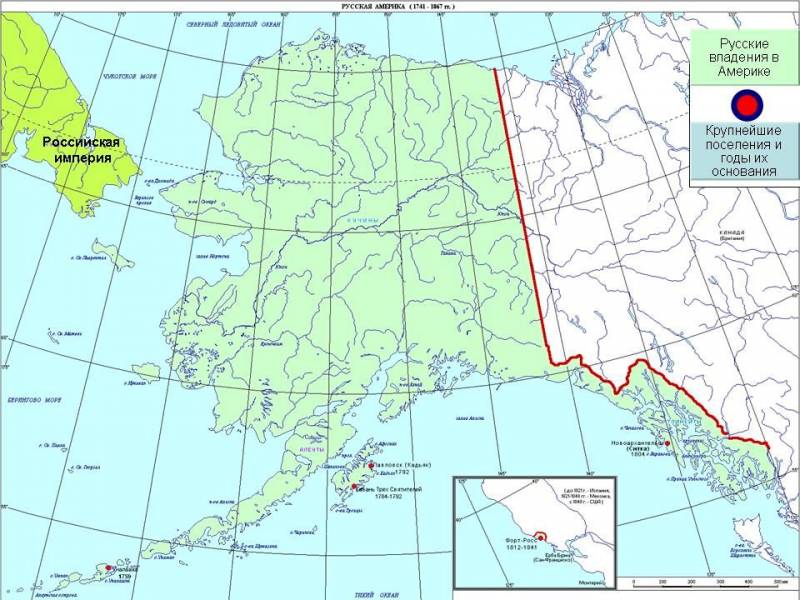
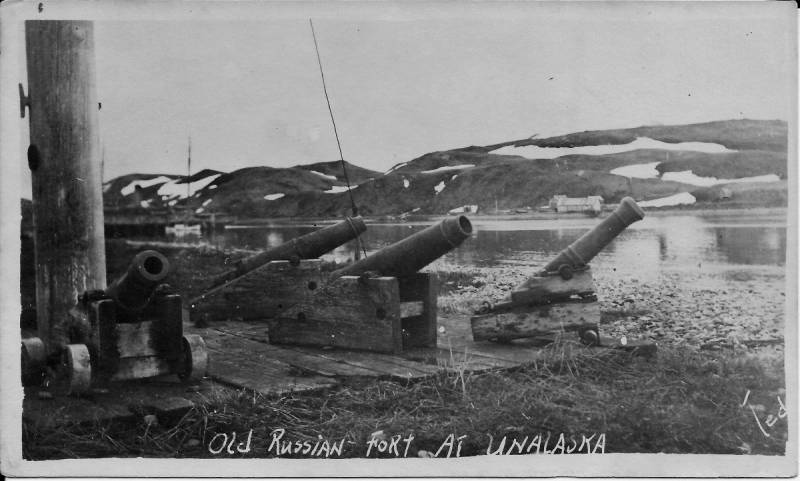
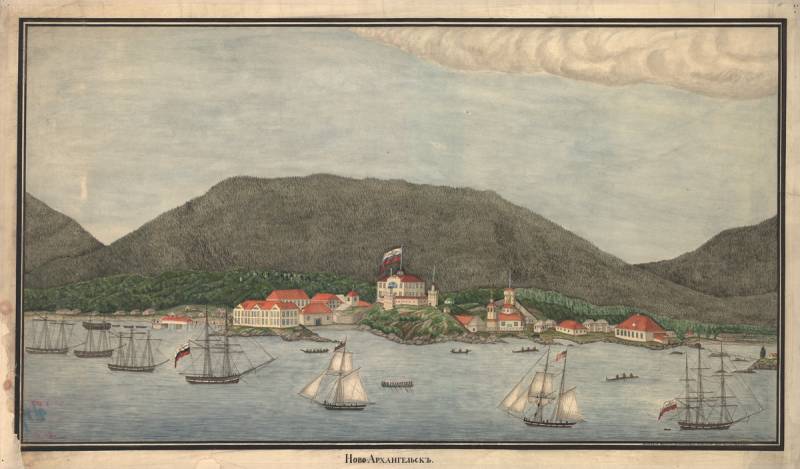
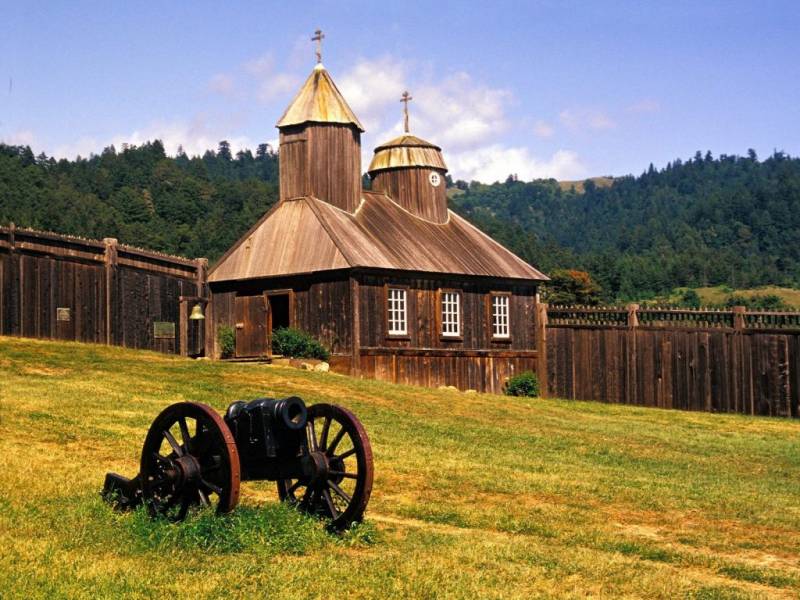
Information